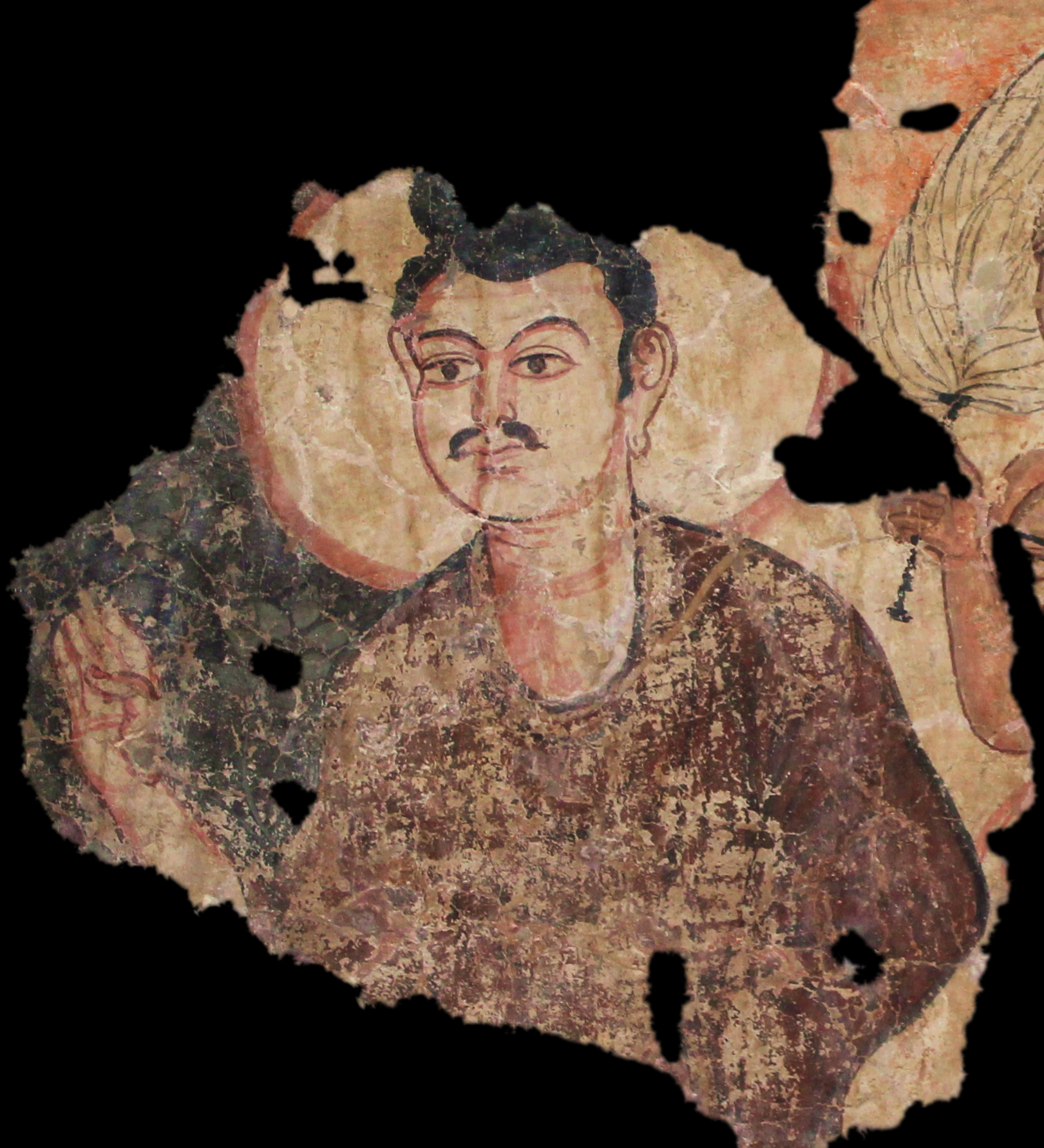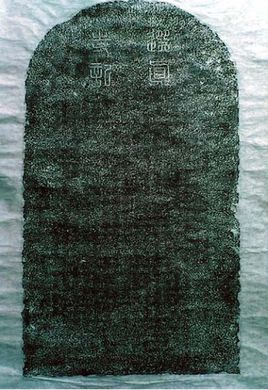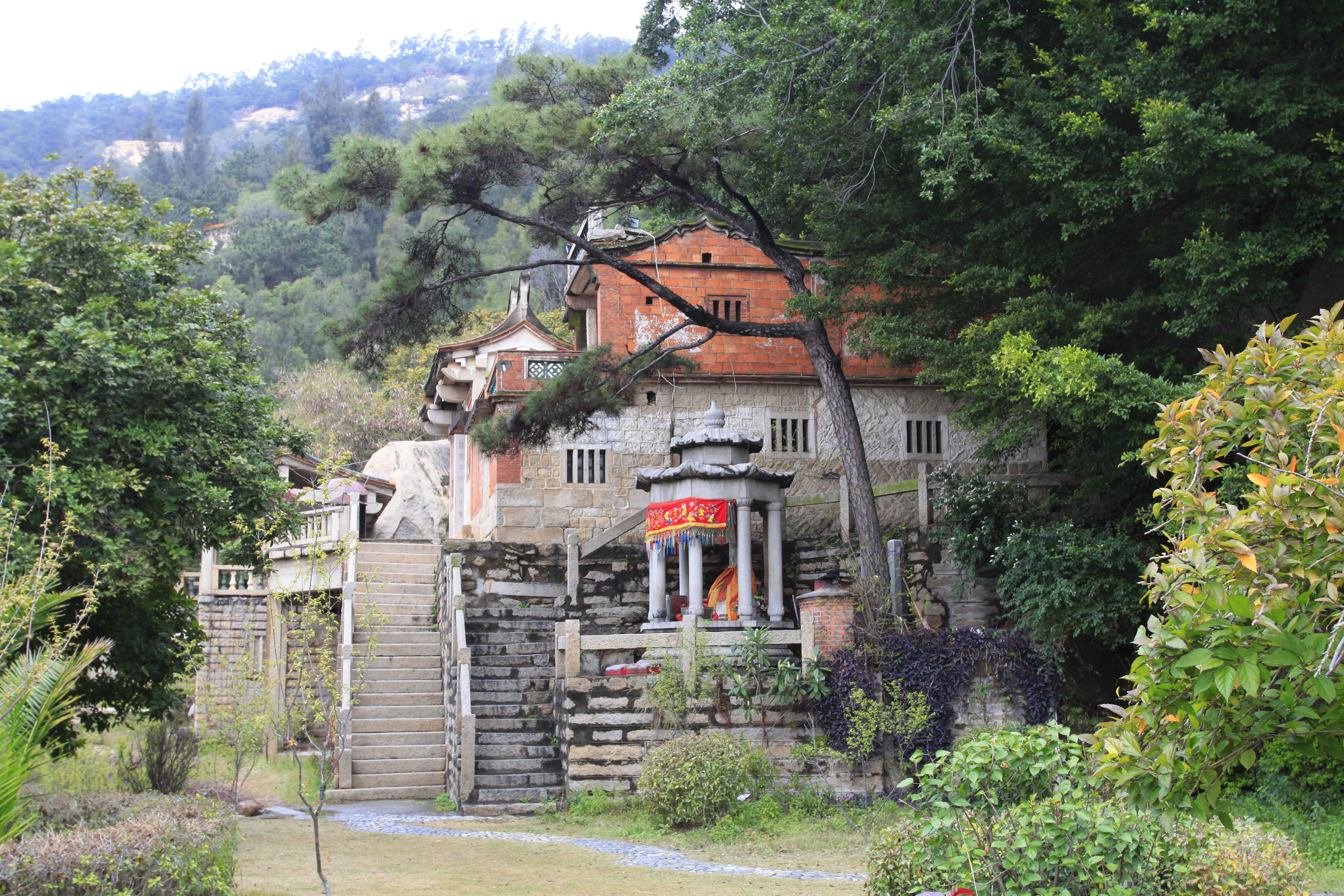|
Qianku
Qianku is a town under the jurisdiction of Cangnan County, Wenzhou City, Zhejiang Province, People's Republic of China. Located in the center of Jiangnanyang Plain in Cangnan County, with an area of 62.86 square kilometers and a population of 127,000 (2017), it has jurisdiction over Yangtou, Qianqianjin, Hengjie, Dongxi Street, Jinjiayang, Sanshiqiao communities, Xiakou and Xiangqiao, Xin'an, Xianju, Kuoshan, Chengnan, Chengbei districts, a total of 47 administrative villages. Qianku is most well known for its pleasant climate, environment and dense river network. Geographically, it is connected to Longgang City in the east, Wangli Town in the west, Yishan Town in the north, and Jinxiang Town and Chixi Town in the south. Existing Longjin Avenue and G1523 Ningbo-Dongguan Expressway. 228 National Highway, S216 Lin'an-Cangnan Expressway, Rui-Cang Expressway Qianku Section are under construction. Qianku Town was selected as the fourth batch of provincial-level small city cul ... [...More Info...] [...Related Items...] OR: [Wikipedia] [Google] [Baidu] |
Qianku
Qianku is a town under the jurisdiction of Cangnan County, Wenzhou City, Zhejiang Province, People's Republic of China. Located in the center of Jiangnanyang Plain in Cangnan County, with an area of 62.86 square kilometers and a population of 127,000 (2017), it has jurisdiction over Yangtou, Qianqianjin, Hengjie, Dongxi Street, Jinjiayang, Sanshiqiao communities, Xiakou and Xiangqiao, Xin'an, Xianju, Kuoshan, Chengnan, Chengbei districts, a total of 47 administrative villages. Qianku is most well known for its pleasant climate, environment and dense river network. Geographically, it is connected to Longgang City in the east, Wangli Town in the west, Yishan Town in the north, and Jinxiang Town and Chixi Town in the south. Existing Longjin Avenue and G1523 Ningbo-Dongguan Expressway. 228 National Highway, S216 Lin'an-Cangnan Expressway, Rui-Cang Expressway Qianku Section are under construction. Qianku Town was selected as the fourth batch of provincial-level small city cul ... [...More Info...] [...Related Items...] OR: [Wikipedia] [Google] [Baidu] |
Chinese Manichaeism
Chinese Manichaeism or ‘Religion of Light’ known as Monijiao ( zh, t=摩尼教, w=Mo2-ni2 Chiao4, p=Móníjiào, l=religion of Moni) or Mingjiao ( zh, t=明教, w=Ming2-Chiao4, p=Míngjiào, links=no, l=religion of light or 'bright religion'), is the form of Manichaeism transmitted and practiced in China. It rose to prominence during the Tang dynasty and, despite frequent persecutions, has continued long after the other forms of Manichaeism were eradicated in the West.Dr. Char Yar.Monijiao (Manichaeism) in China. academia.edu. Lecture presented at the ''Worldwide Conference for Historical Research'', 2012. The most complete set of surviving Manichaean writings were written in Chinese sometime before the 9th century and were found in the Mogao Caves among the Dunhuang manuscripts. Chinese Manichaeism represents a set of teachings with the purpose of inducing awakening (佛 ''fó''), and it is a dualistic religion that believes in the eternal fight between the principles of go ... [...More Info...] [...Related Items...] OR: [Wikipedia] [Google] [Baidu] |
Cangnan
Cangnan County ( ) is a county in the prefecture-level city of Wenzhou in southern Zhejiang. The county government is in Lingxi. Cangnan has 20 towns, 14 townships, and two nationality townships. The predominant Chinese dialect spoken in Cangnan is Zhenan Min, but other dialects, such as Wenzhou dialect and Jinxiang dialect, are also spoken. Founded in 1981, Cangnan County is the south gate of Zhejiang Province, the major birthplace of the “Wenzhou Pattern” as well as an open door to the outside world authorised by the State Council. Its total land area is 1,261 square kilometres and its sea area is 3,783 square kilometres. Governing 10 towns, two minority towns and with a registered population of 1.3 million people, it is the most populous county in Zhejiang. In 2014, the county realised a GDP of US$6.3bn and total fiscal revenue of US$658m. The annual outputs of the packaging-printing and plastic-plating industries are 15 per cent and 20 per cent of national outputs respect ... [...More Info...] [...Related Items...] OR: [Wikipedia] [Google] [Baidu] |
Cangnan County
Cangnan County ( ) is a county in the prefecture-level city of Wenzhou in southern Zhejiang. The county government is in Lingxi. Cangnan has 20 towns, 14 townships, and two nationality townships. The predominant Chinese dialect spoken in Cangnan is Zhenan Min, but other dialects, such as Wenzhou dialect and Jinxiang dialect, are also spoken. Founded in 1981, Cangnan County is the south gate of Zhejiang Province, the major birthplace of the “Wenzhou Pattern” as well as an open door to the outside world authorised by the State Council. Its total land area is 1,261 square kilometres and its sea area is 3,783 square kilometres. Governing 10 towns, two minority towns and with a registered population of 1.3 million people, it is the most populous county in Zhejiang. In 2014, the county realised a GDP of US$6.3bn and total fiscal revenue of US$658m. The annual outputs of the packaging-printing and plastic-plating industries are 15 per cent and 20 per cent of national outputs respect ... [...More Info...] [...Related Items...] OR: [Wikipedia] [Google] [Baidu] |
Cangnan Stele
The Cangnan Stele is the temple stele of the Yuan Dynasty Manichaean monastery Xuanzhen Temple (选真寺). It is the only Manichean stone monument found in the world so far. The stele has been listed in China as a national second-class cultural relic, now in the Cangnan County Museum, in Zhejiang Province. The monument is 150 cm high, 76 cm wide, and 10 cm thick, half on the forehead of the round stele; the inscription is inscribed in seal script, "Xuansiji". Lin Wushu called the Xuanzhen Temple according to the inscription "It was built by the church of the neighboring countries of Jiangsu, and was built before the Gai Peng family." It means that the Mingjiao of Xuanzhen Temple still inherits the tradition of Manichaeism in the Tang Dynasty, influenced by foreign religions, and is different from ordinary folk religions. Inscription The full text of the stele: See also * Cao'an Cao'an ( Samuel N. C. Lieu and Ken ParryManichaean and (Nestorian) Christian ... [...More Info...] [...Related Items...] OR: [Wikipedia] [Google] [Baidu] |
Yishan, Cangnan County
Yishanzhen ( Chinese :宜 山镇) is a town in China. It is located in Zhejiang Province , in the eastern part of the country, about 310 kilometers south of the provincial capital Hangzhou . The population is 56,008. population is 26,805 women and 29,203 men. Children under 15 years make up 16.0%, adults 15-64 years 77%, and older people over 65 years 6.0%. Around Yishanzhen it is densely populated, with 762 inhabitants per square kilometer. nearest major community is Jinxiang , 11.5 km southeast of Yishanzhen. The area around Yishanzhen consists mostly of agricultural land . The average annual rainfall is 2,019 millimeters. The wettest month is June, with an average of 275 mm of rainfall , and the driest is January, with 66 mm of rainfall. References Cangnan County Township-level divisions of Zhejiang {{Zhejiang-geo-stub ... [...More Info...] [...Related Items...] OR: [Wikipedia] [Google] [Baidu] |
Xiapu County
Xiapu (; Foochow Romanized: Hà-puō) is a county in the municipal region of Ningde, Fujian, People's Republic of China, located along a stretch of East China Sea coast, with many harbours and islands. It is bordered by Fuding City and Zherong County to the north, Fu'an City and Ningde's urban area to the west, and Luoyuan County, Fuzhou and the Matsu Islands of Lienchiang County, Republic of China (Taiwan) to the south. Xiapu is famous among landscapes lover photographers. *Area: *Population: 510,000 *Postal code: 355100 Administration The county executive, legislature and judiciary are in Songcheng Town (), together with the CPC and PSB branches. Xiapu has jurisdiction over 6 other towns () and over 7 townships (), of which three are ethnic townships designated for the native She people. Towns * Sansha (三沙镇) * Yacheng (牙城镇) * XiNan(溪南镇 and 下埔) * Shajiang (沙江镇) * Xiahu (下浒镇) * Changchun (长春镇) Townships * Baiyang (柏洋� ... [...More Info...] [...Related Items...] OR: [Wikipedia] [Google] [Baidu] |
Cao'an
Cao'an ( Samuel N. C. Lieu and Ken ParryManichaean and (Nestorian) Christian Remains in Zayton (Quanzhou, South China). ARC DP0557098) is a temple in Jinjiang, Fujian, . Originally constructed by Chinese Manicheans, it was considered by later worshipers as a Buddhist temple. This "Manichean temple in Buddhist disguise" is seen by modern experts on Manichaeism as "the only extant Manichean temple in China", or "the only Manichean building which has survived intact". In 2021, Cao'an was inscribed on the UNESCO World Heritage List along with many other sites near Quanzhou because of its unique testimony to the exchange of religious ideas and cultures in medieval China. Over 2022 the number of tourists to the location doubled and preservation efforts began. Geography The temple is located on the southern slope of Huabiao Hill near Shedian Village just west of downtown Jinjiang.Li Yukun (李玉昆福建晋江草庵摩尼教遗址(The relics of Manichaean temple Cao'an in Jinjian ... [...More Info...] [...Related Items...] OR: [Wikipedia] [Google] [Baidu] |
Manichaeism
Manichaeism (; in New Persian ; ) is a former major religionR. van den Broek, Wouter J. Hanegraaff ''Gnosis and Hermeticism from Antiquity to Modern Times''SUNY Press, 1998 p. 37 founded in the 3rd century AD by the Parthian Empire, Parthian prophet Mani (prophet), Mani (AD 216–274), in the Sasanian Empire. Manichaeism teaches an elaborate dualistic cosmology describing the conflict between good and evil, struggle between a goodness and value theory, good, spirituality, spiritual world of light, and an evil, material world of darkness. Through an ongoing process that takes place in human history, light is gradually removed from the world of matter and returned to the world of light, whence it came. Its beliefs are based on local Mesopotamian religious movements and Gnosticism. It reveres Mani as the final prophet after Zoroaster, Gautama Buddha, and Jesus. Manichaeism was quickly successful and spread far through the Aramaic language, Aramaic-speaking regions. It thrived be ... [...More Info...] [...Related Items...] OR: [Wikipedia] [Google] [Baidu] |
Chixi, Cangnan County
Chixi () is a town under the jurisdiction of Cangnan County, Wenzhou City, Zhejiang Zhejiang ( or , ; , also romanized as Chekiang) is an eastern, coastal province of the People's Republic of China. Its capital and largest city is Hangzhou, and other notable cities include Ningbo and Wenzhou. Zhejiang is bordered by Jiang ... Province, People's Republic of China. Administrative divisions Chixi Town administers the following village-level administrative division units: Chixi, Nanxing Village (), Banyang Village (), Si'an Village (), Baiwan Village (), Liuqi'ao Village (), Yuanyuan Village (), Xinzhi Village (), Hujing Village (), Yuanyu Village (), Shuanglian Village (), Zhongdun Community (), Wangjiashan Village (), Nantou Village (), Shapo Village (), Diaobideng Village (), Shitang Village (), Anfeng Village (), Yuxi Village (), Wudongqiao Village (), Xindong Village (), and Xiamen Village (). Chixi Wudong Bridge The Chixi Wudong Bridge was included in the sixt ... [...More Info...] [...Related Items...] OR: [Wikipedia] [Google] [Baidu] |
Jinxiang, Zhejiang
Jinxiang is a town under the jurisdiction of Cangnan County, Wenzhou, Zhejiang Province, People's Republic of China, bordered by the East China Sea, located at the junction of Zhejiang and Fujian, with an area of 43.55 square kilometers. Jinxiang dialect is spoken mainly in the town, and the "Man" dialects and Minnan dialects are spoken in some rural areas. Jinxiang is surrounded by mountains on three sides and the sea outside the mountains. It is originally a rocky reef area made of coastal sand and alluvial soil. History Jinxiang has a history of over 600 years. During the Ming Dynasty, Jinxiang was the front line of sea defense and an important place for the Chinese army to fight against the Japanese in wars. 1387 ( Ming Hongwu two decades) Jinxiang fortification guard set for southern Zhejiang coastal city. Administrative divisions Jinxiang administers the following village-level administrative division units Phoenix Community, Fengle Community, Qiushan Community, Chat ... [...More Info...] [...Related Items...] OR: [Wikipedia] [Google] [Baidu] |
China
China, officially the People's Republic of China (PRC), is a country in East Asia. It is the world's most populous country, with a population exceeding 1.4 billion, slightly ahead of India. China spans the equivalent of five time zones and borders fourteen countries by land, the most of any country in the world, tied with Russia. Covering an area of approximately , it is the world's third largest country by total land area. The country consists of 22 provinces, five autonomous regions, four municipalities, and two Special Administrative Regions (Hong Kong and Macau). The national capital is Beijing, and the most populous city and financial center is Shanghai. Modern Chinese trace their origins to a cradle of civilization in the fertile basin of the Yellow River in the North China Plain. The semi-legendary Xia dynasty in the 21st century BCE and the well-attested Shang and Zhou dynasties developed a bureaucratic political system to serve hereditary monarchies, or dyna ... [...More Info...] [...Related Items...] OR: [Wikipedia] [Google] [Baidu] |






